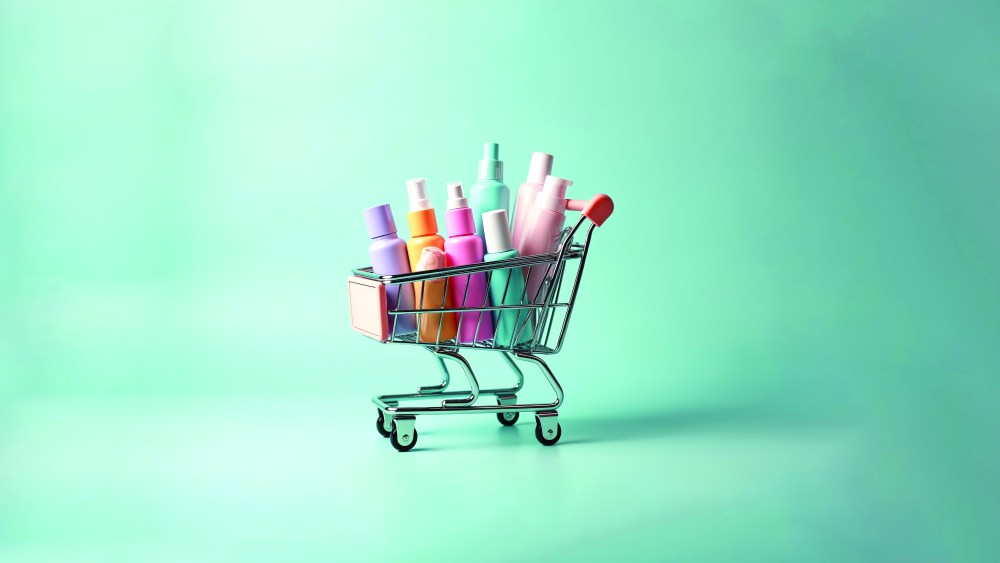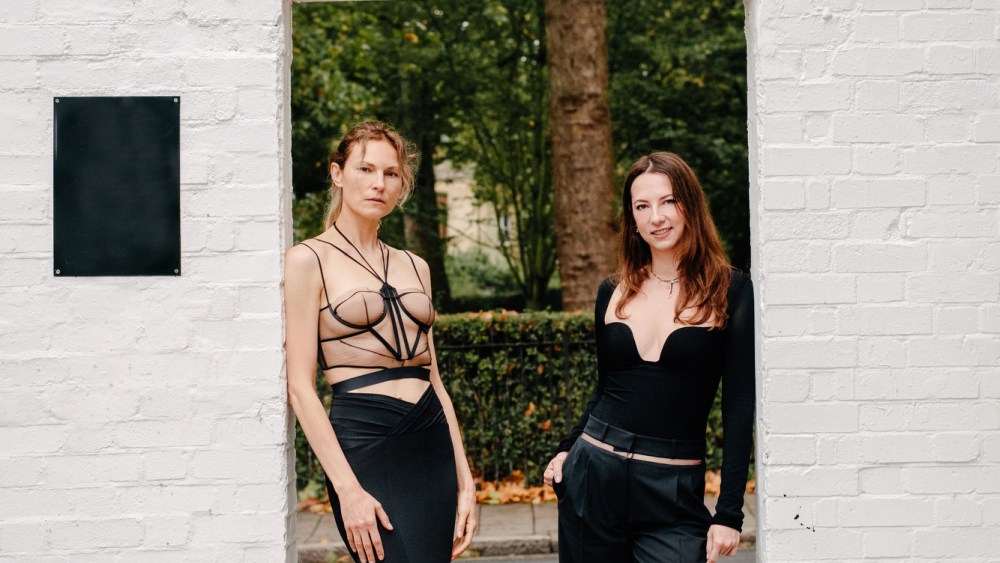As 2025 winds down to a close, NielsenIQ’s managing director of beauty and health Jacqueline Flam is predicting another year of uncertainty for the retail landscape. While this year saw a cautious to intentional spending shift, 2026 is gearing up to be another 12 months of complex issues driven by a volatile economy and a wary consumer.
NielsenIQ’s annual report, “Consumer Outlook: Guide 2026,” gives insights into what the must-knows are for manufacturers and retailers to engage with a hopeful yet cautious consumer for the upcoming 12 to 18 months.
The report merges NielsenIQ’s proprietary survey and purchase data to unveil the gaps in the market between what consumers say and what actions they take. The study also gives depth to the latest trends shaping retail today — such as artificial intelligence and retail media networks (RMNs).
From online beauty sales driving category growth to the rise of social commerce and Korean beauty domination, Flam sat down with Fairchild Studio to discuss her five major retail predictions for 2026.
Trend 1: Beauty Sales Online Continue to Dominate
According to NielsenIQ data and over a 52-week period, 53 percent of all beauty sales occur online — a growth of more than 18 percent year-over-year. The major drivers of this include TikTok and Amazon, both of which are propelling growth in beauty online. While the two are not the only ones helping grow the sector, online sales continue to outpace in-store sales, which are growing at just 1 percent year-over-year.
On Amazon, the e-commerce giant emphasizes brands that have first-party storefronts versus those selling as third-party merchants. And on TikTok Shop, brands can improve their presence via a splashy promotional strategy and intentional influencer marketing.
Brands can create a seamless omnichannel experience and reach customers both online and in-store by leveraging the channel-strong attributes. The digital realm gives brands the space to display their full offering, tailor personalized offers and most notably, test and launch innovations and category expansions with less risk. Meanwhile, the physical store provides consumers a more sensorial driven experience, helps them discover new brands and products, drives impulse spend and create pop-up events that lure shoppers in.
“Shoppers buying online versus in-store are inherently different. Online, shoppers take less trips per year, but are spending more on each individual trip, as they are more likely to plan these purchases ahead of time. Drivers of this include time-saving, good value and 24/7 availability. Physical stores see a higher number of trips — but less spending per trip — a quick way to access products in the moment. Drivers of in-store shopping include convenient location, habit and product availability.”
Trend 2: Social Commerce and Exclusive Product Launches
In the past, brands have focused on product launch strategies that begin with legacy retail distribution and then later expand online as a replenishment driver.
Now, TikTok has become the channel consumers are turning to for discovering new brands, with direct purchases on the social media platform occurring, with halo impact benefiting Amazon and legacy retailers. Brands should double down on exclusive product launches, as they build excitement and promote impulse purchasing — all to get brands in the hands of more consumers.
“Beauty shoppers are seeking three things: value, efficacy and relevancy. Ensuring assortment meets these key needs, along with delivering on an enjoyable store experience with strong brand storytelling and supportive merchandising that calls out key benefits and attributes is critical.”
Trend 3: K-beauty Reigns Supreme
Korean beauty has taken the world by storm as pioneers in the space and industry leaders. Notably, the K-beauty brands are gaining momentum in the U.S. — dollar sales have increased by 37 percent in the past year alone.
Social media has played a major role in driving this growth in terms of visibility and awareness. With cutting-edge tech innovations in terms of ingredients and formats, the beauty brands continue to stay ahead of the curve with emerging beauty trends. The brands also offer highly effective products at accessible price points, making them an attractive option for value-conscious consumers. Hence, shoppers are focusing on K-beauty more with its quality and innovations, continuing to grow this category.
K-beauty has also influenced the U.S. skin care market — especially with its introduction of new and potent ingredients such as ginseng and fermented extracts, which have become a norm amongst mainstream shoppers. This has also helped the rise of the informed and ingredient-savvy consumer; brands have now shifted to become more transparent and ingredient-focused in their marketing and communications.
“To sustain momentum, brands must prioritize strategies that attract new buyers outside their existing cohorts. This presents an opportunity for skin care brands to compete by doubling down on innovation and staying ahead of emerging skin care trends. While K-beauty is relatively new to the U.S. market, established brands can lean into their legacy, highlighting proven results and long-standing consumer trust. Viral appeal may drive initial trial, but long-term loyalty is built through high-quality, effective products that deliver real value. By clearly communicating these strengths, legacy skincare brands
can stand out and win with today’s beauty consumer.”

Trend 4: Indie Beauty Revolution and The Realities of Shelf Space
Indie brands are finally getting their time in the limelight — in the past year, they’ve seen more than 20 percent growth; they’re significantly outpacing conglomerates, which have only seen about 5 percent growth over the same timeframe.
Today, consumers are enticed by indie brands for their trendsetting and innovation in product formats and ingredients. With smaller and more agile production operations, they can quickly respond to emerging and rising beauty trends. Supporting indie brands and their founders, who are most often connecting with consumers on social media, aligning with consumers’ personal values such as sustainability, inclusivity and ethical sourcing.
Notably, indie brands often grow a cult-following by focusing on the specific needs and preferences that large brands tend to overlook by recognizing a gap in the market. Hence, indie brands can resonate more with consumers’ beauty goals and preferences.
While indie brands have a growing presence, conglomerates continue to stay powerful in the industry. The rise of these new brands has forced conglomerates to be proactive in defending both their relevancy and shelf space, even as conglomerates still have a major dominance with their in-store presence. This is especially key where younger consumers, such as Generation Z and Gen Alpha, prefer shopping in physical retail environments.
“Personalization, driven by increasingly informed consumers seeking targeted solutions for their unique beauty needs will continue to increase in importance. As shoppers become more knowledgeable about products and ingredients, they’re looking to enhance their routines with offerings tailored to their specific concerns. Technology plays a vital role in meeting this demand, creating more engaging and customized experiences. Beauty consumers are embracing these innovations and brands have a valuable opportunity to connect with them in more meaningful and exciting ways through technology.”
Trend 5: Cautious Consumers and Rising Prices
It should come as no surprise that consumers remain cautious shoppers still. And given anxiety around price hikes, with the ever-changing nature of incoming tariffs by the Trump administration and increasing cost of living, consumers continue to be more selective and wary in their purchasing decisions.
Consumers have never been more educated and they continue to gravitate toward brands with clinical results, including ingredient callouts and product efficacy. Brands that take the time to invest and conduct clinical studies with clear marketing claims are resonating with consumers.
NielsenIQ has also tracked that professional beauty brands have seen an uptick in spending and are penetrating the market as shoppers have their eyes on salon-quality results and saving the trip.
“Beauty is more resilient than most other departments across the store, falling only behind food and general merchandise in terms of shifted dollars across the store. Beauty is winning whereas spend on categories including alcohol, pet, floral and baby are declining. Beauty is also well positioned to pick up the shift in shopper behavior as they step away from professional services, i.e. hair salons and spas and bring those needs in-home.”



